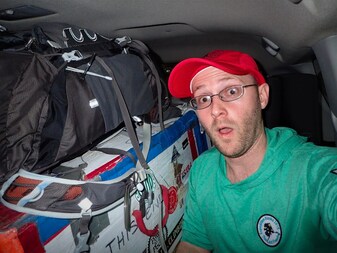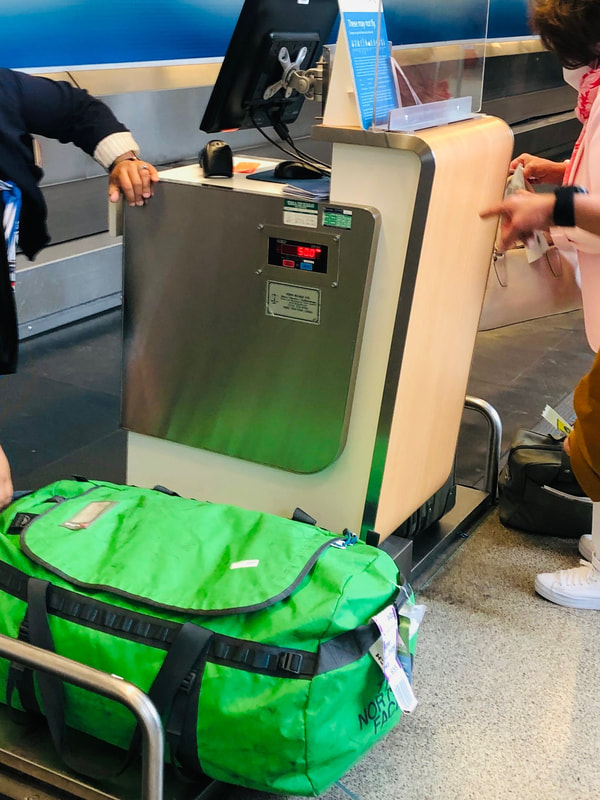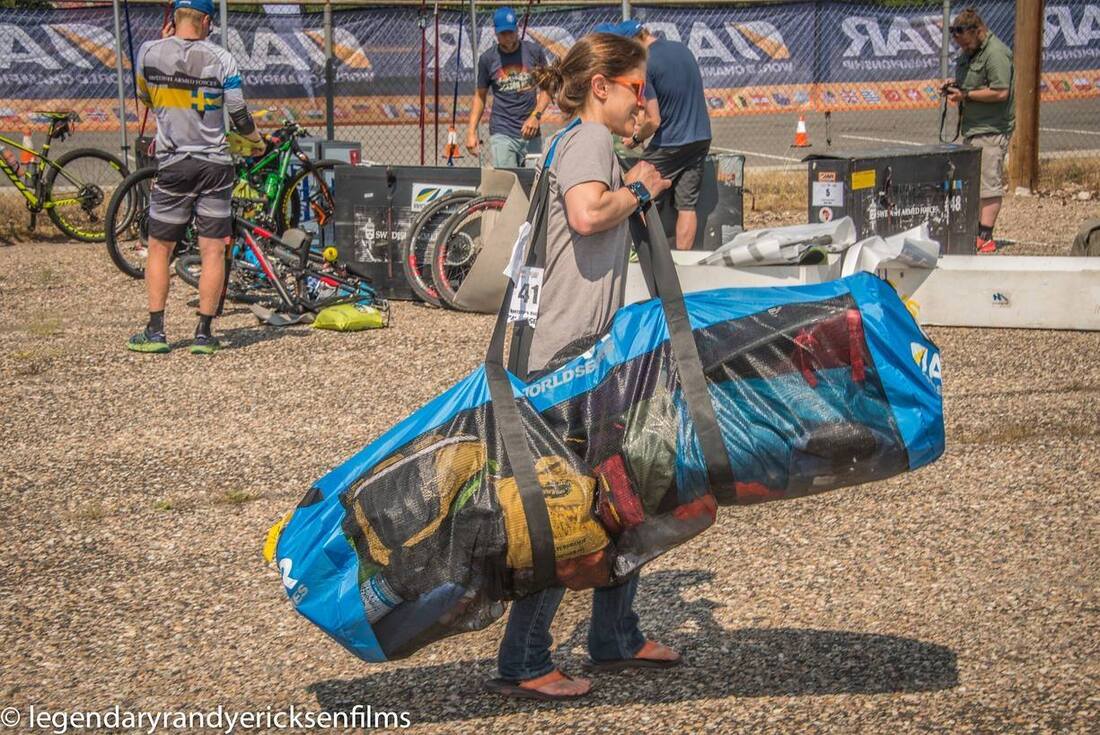|
The age-old adage of expedition racing is that the hardest part is getting to the start line. For many, the puzzle of packing gear, shipping or transporting it, and transporting yourself is the least enjoyable part of the experience, even if it’s not TRULY the hardest! But don’t let this logistical hurdle stop you; good planning and attention to detail goes a long way to helping minimize that stress. With almost no exceptions, you will fall into one of two categories: you will drive to the race, or you will have to fly. Driving On one level, drivers have it easy. No flights to contend with, no mathematical conundrums as you sort out weight and bag limits for bike boxes and gear bins, no questions of whether to fly with a gear bin or acquire one on site. And it’s a lot cheaper! On the other hand, for a race like the Endless Mountains that requires racers to use ARWS standard bike boxes, it can get tricky figuring out how to transport the bike box to the race. For better and worse, there isn’t too much to say on this front. It’s really about the bike boxes, assuming the rest of your gear will fit in the car. Some have bike boxes that fold up and might be able to lay flat in the car. Easy. For those with rigid boxes, here are your options:
FLYINGFor those flying in from further afield, you have harder logistics. Notes about bike boxes above still apply: how are you going to get all your gear and bike boxes to the airport? How to deal with weight restrictions? How to pack everything without paying the airline a small fortune in extra fees? Here are some tips to consider when flying to you race:
2)Make sure you know what you are allowed to bring on the plane. How many checked bags are you allotted? Carry-ons? How much does each bag cost? Weight restrictions? Size limits? If you have disposable funds, this isn’t as stressful, but if you have a tighter budget, micromanaging each pound becomes important. Know what you are allotted. 1)What is your airline’s policy on bikes? Some airlines have started to allow for the free transportation of bikes, but make sure you know the associated costs, weight, and size restrictions you are dealing with. And read the fine print. Not all routes are treated the same. 2)Airport to race HQ: this often is the hardest puzzle to fit together. Flying and transporting gear is tedious, but you will either figure out what to leave at home for financial reasons or you will shell out for that extra bag. When you land, how do you – and your gear – get to race HQ? Start off by studying the race website. Some RDs include pre- and post-race transportation in the race fee. Others include it as an add-on. Some don’t offer any assistance at all. If the website isn’t clear, reach out to the RD. Some of the best races we have done offered no transportation perks, so don’t let that deter you. That said, make sure you are planning WELL ahead of time to avoid paying extra or ending up stuck without any apparent options to get to and from the race. 3)If your race does not include transportation assistance, consider the following:
packingOkay, you have sorted your logistics, you’ve done the training, you’ve spent your holiday money on new gear, and now you need to pack. On one level, this is straight forward: lay out your gear, organize it, check it two or three or seven times, and then throw it all in some bags and boxes and do it all over again when you get to your pre-race lodging. If you can drive to the race, you are fortunate in that you don’t need to worry too much about overpacking. That said, we like to think of packing as the first stage of the race. This is your first chance to really start thinking about what you are going to need. How you are going to pack your actual race pack? How will your your team distribute mandatory gear? What goes in your bike box? A gear bin? What stays in your pack? How many pairs of shoes do you REALLY need, and is it worth using leftover weight for clothes, food, or something else? Experienced teams show up to the race with a much better handle on their gear. Their food is often already organized into twelve-hour bags, or something that works for them individually. Clothes are packed and organized. Typically, you will receive some sort of race planner from the RD a week or so out, and the savvy racer will figure out how much food, clothing, and other gear will be required on each stage. They will organize that gear at home, label bags for each stage, and save themselves hours of time at the race site before the race starts. This translates to more sleep and less stress. If you are flying, you will have to contend with weight restrictions unless you fork out for extra baggage. Assuming you don’t do that, consider the following tips for packing your gear to fly:
One final tip, from brent...Who is the nicest, friendliest person on your team? I have a theory that if a team travels together and allows that person to lead the way in check in, your chances of saving some money with your bikes and bags go way up. For us, it’s Abby: granted, Abby and I always travel together when we’re both racing (and we are married), so it’s easier for one of us to check the other one in. But time and again, I shut my mouth and hang back. She talks to the desk agents about the race, the bikes, how exciting it is. And we often pay less than we expected. Sometimes they waive the bike fee. Sometimes they charge less for one of the bags or the bike. It doesn’t work every time, but usually we get a great deal!
0 Comments
Your comment will be posted after it is approved.
Leave a Reply. |



 RSS Feed
RSS Feed
